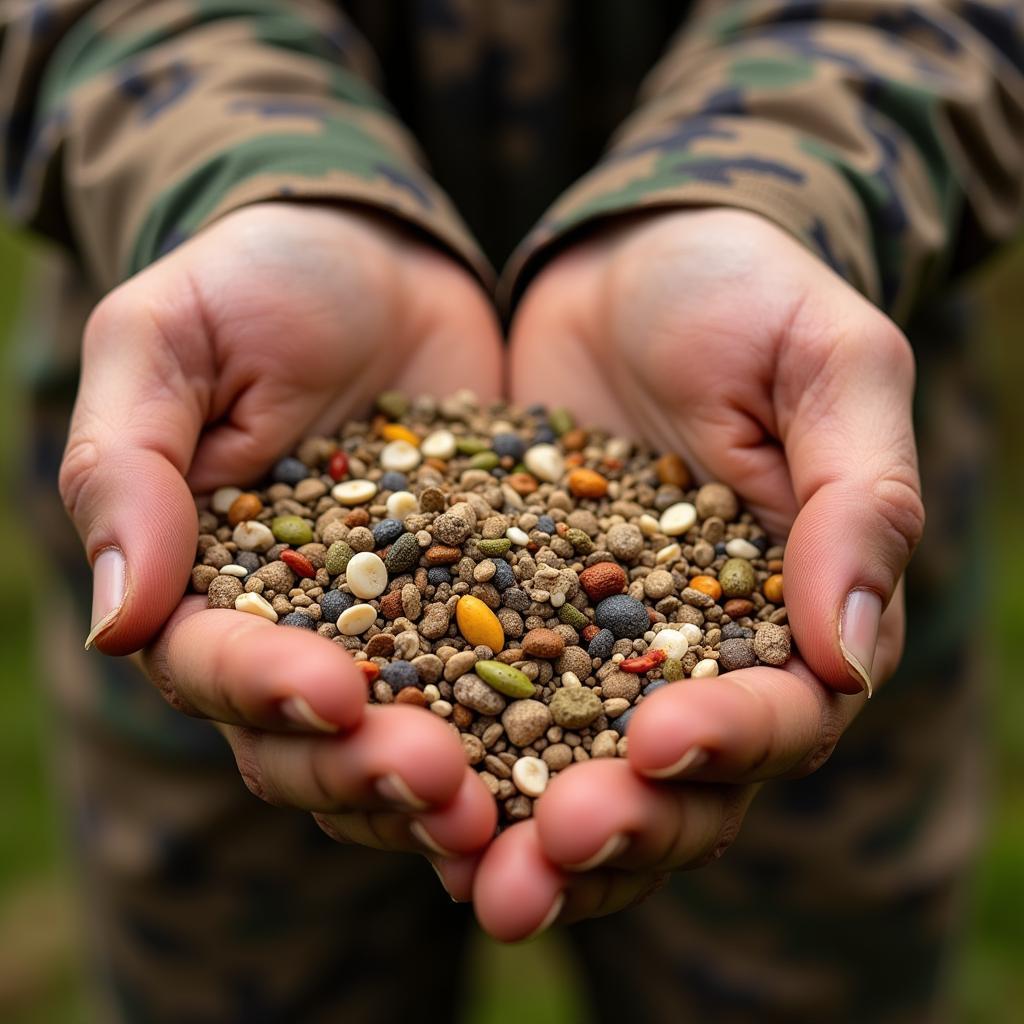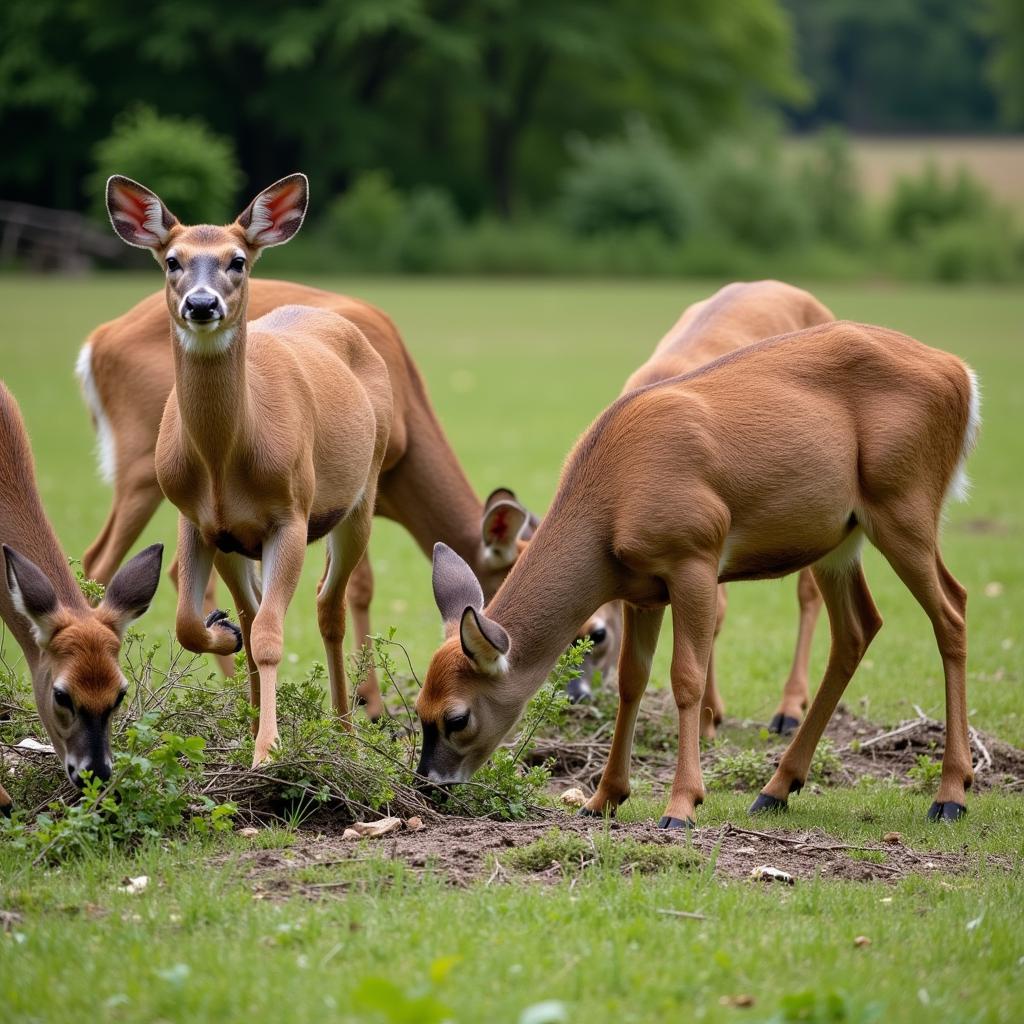For dedicated hunters and wildlife enthusiasts, the quest to create the perfect deer food plot is never-ending. A well-planned food plot can transform your hunting grounds, attracting deer year-round with a consistent and nutritious food source. But achieving this requires a strategic approach that considers your local climate, soil conditions, and the changing nutritional needs of deer throughout the year.
 Best Year-Round Deer Food Plot
Best Year-Round Deer Food Plot
Understanding the Importance of Year-Round Food Plots
While supplemental feeding during the fall hunting season can be beneficial, establishing a year-round food plot offers several significant advantages:
- Improved Herd Health: Providing a consistent source of essential nutrients throughout the year contributes to healthier deer populations with improved body condition and antler growth.
- Increased Fawning Success: Does with access to high-quality forage produce healthier fawns with higher survival rates.
- Enhanced Hunting Opportunities: Year-round food plots concentrate deer activity in predictable locations, creating more consistent hunting opportunities.
- Reduced Crop Damage: Offering an alternative food source can help minimize browsing pressure on agricultural crops and gardens.
Selecting the Right Food Plot Seed Mix
The key to a successful year-round deer food plot lies in choosing the right combination of plants to provide nutritional value throughout the seasons. Here’s a breakdown of what to consider:
Spring and Summer Forage
- Clovers: Ladino, red, and white clover varieties are highly palatable to deer and provide excellent protein content.
- Alfalfa: This legume offers high protein levels and thrives in well-drained soil, making it a valuable addition to spring and summer food plots.
- Soybeans: A warm-season favorite, soybeans offer both protein and energy, attracting deer throughout the summer months.
- Chicory: With deep taproots, chicory can withstand drought conditions and provides a source of essential minerals.
Fall and Winter Sustenance
- Brassicas: Turnips, radishes, and rape brassicas are cold-hardy options that provide valuable energy during the lean winter months.
- Winter Rye: This cereal grain establishes quickly and can tolerate cold temperatures, offering deer a readily available food source throughout the winter.
- Austrian Winter Peas: This legume is highly attractive to deer and adds nitrogen to the soil, improving its overall health.
 Deer Food Plot Seed Mix
Deer Food Plot Seed Mix
Factors Influencing Your Food Plot Success
Beyond selecting the right seed mix, several factors can influence the success of your deer food plot:
1. Soil Testing and Preparation
Before planting, it’s crucial to conduct a soil test to determine the pH level and nutrient content. This information will guide your fertilizer and lime applications, ensuring optimal plant growth.
2. Planting Time and Techniques
Planting at the right time is essential for seed germination and establishment. Follow the recommended planting dates for your chosen seed varieties and local climate.
3. Weed Control
Weeds compete with your desired food plot plants for nutrients, sunlight, and water. Implementing an effective weed control strategy is essential for a thriving plot.
4. Location and Plot Size
Choose a location with adequate sunlight and consider factors like proximity to water sources and bedding areas. The ideal plot size will depend on your property size and deer density.
 Deer Grazing in Food Plot
Deer Grazing in Food Plot
Maintaining Your Year-Round Food Plot
Establishing a food plot is just the first step; ongoing maintenance is essential for long-term success:
- Fertilization: Regular soil testing will help you determine the necessary fertilizer applications to maintain soil fertility.
- Mowing: Periodic mowing can help control weed growth and encourage desirable plant growth.
- Reseeding: Over time, some food plot species may need to be reseeded to maintain their vigor and attractiveness to deer.
FAQs About Year-Round Deer Food Plots
What is the best time to plant a year-round deer food plot?
The ideal planting time depends on your location and the specific seed varieties you choose. Generally, early spring and late summer are suitable times for establishing food plots.
How large should my deer food plot be?
The optimal size depends on the size of your property and the deer density in your area. Aim for a plot size that is large enough to attract deer but small enough to manage effectively.
Can I plant a food plot in the shade?
While most food plot species prefer full sun, there are shade-tolerant options available, such as shade food plot seed.
What are some common mistakes to avoid when creating a food plot?
Common mistakes include inadequate soil preparation, improper planting techniques, poor weed control, and neglecting ongoing maintenance.
Elevate Your Hunting Experience with a Year-Round Food Plot
Creating a thriving year-round deer food plot requires dedication and planning, but the rewards are substantial. By providing a consistent source of nutritious forage, you can improve herd health, increase hunting opportunities, and cultivate a deeper appreciation for the intricate balance of your local ecosystem.
Need help getting started? Check out these resources:
Investing in a well-designed food plot is an investment in the future of your hunting land and the wildlife it supports. With the right knowledge and a commitment to providing for the needs of your local deer population, you can create a flourishing habitat that benefits both wildlife and hunters alike.
Need more personalized advice for your food plot? Contact our team at Phone Number: 02437655121, Email: [email protected]. Or visit us at: 3PGH+8R9, ĐT70A, thôn Trung, Bắc Từ Liêm, Hà Nội, Việt Nam. We have a 24/7 customer support team.